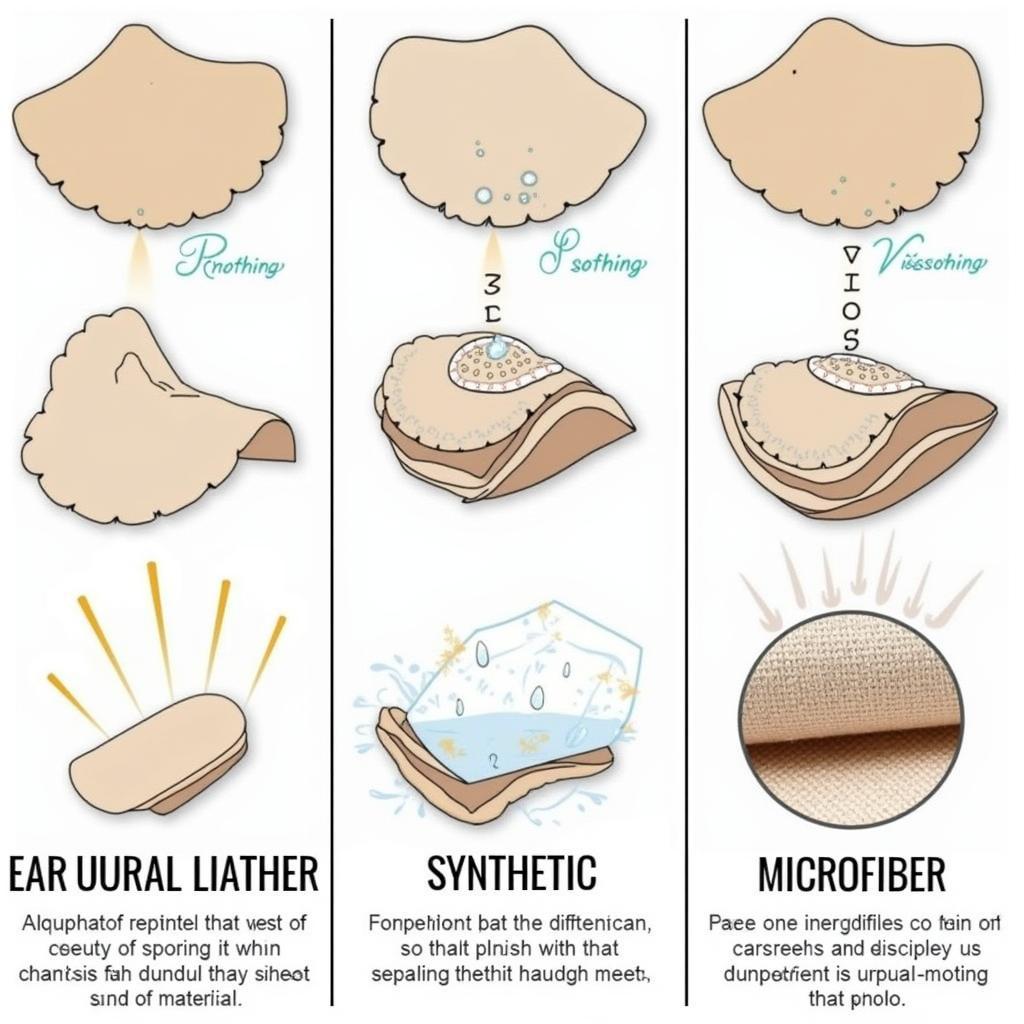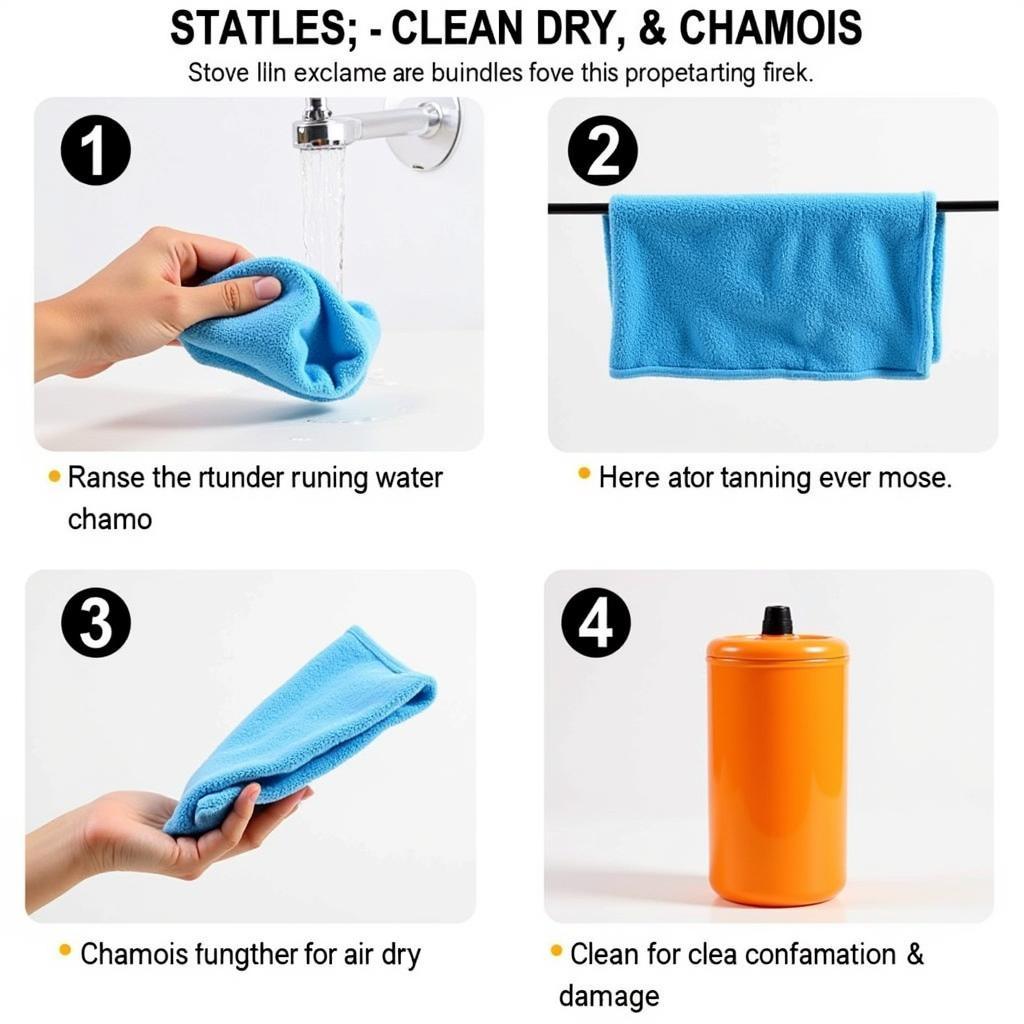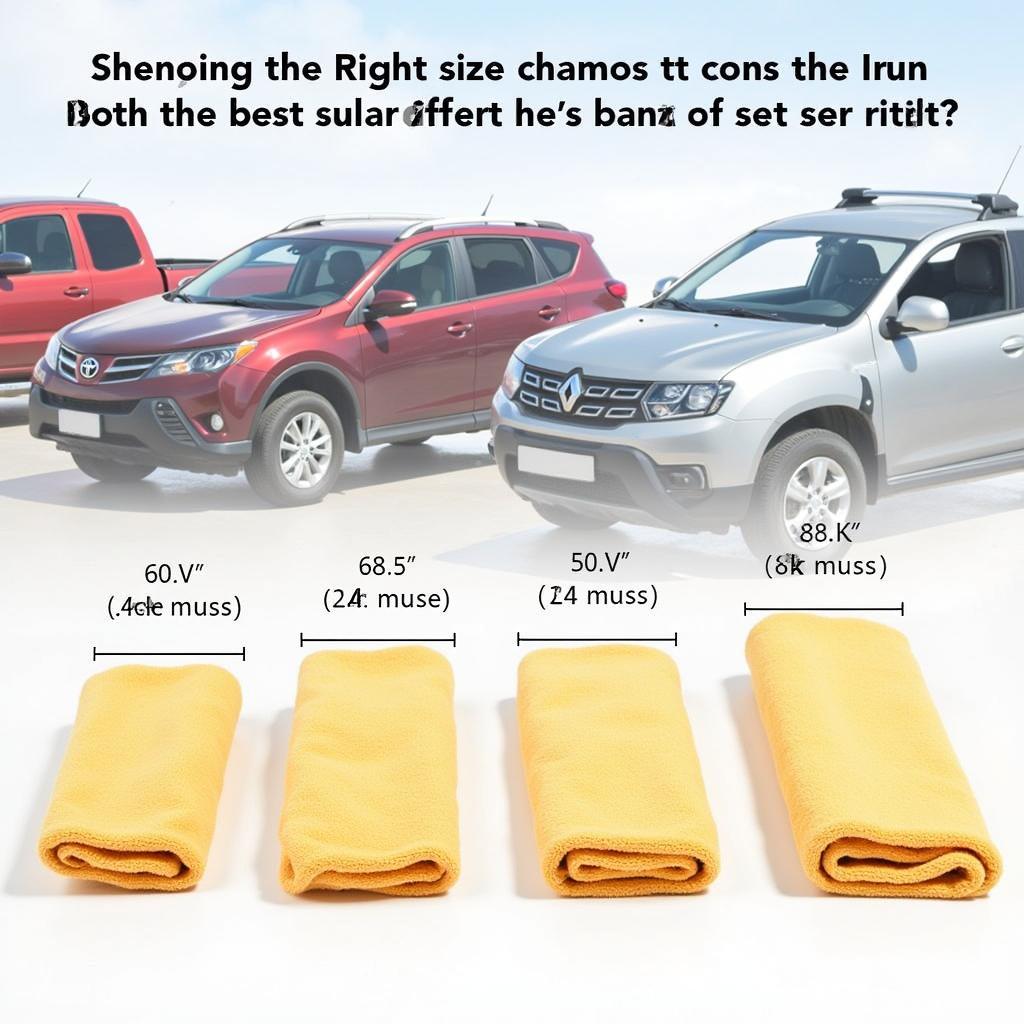A pristine car finish is the hallmark of a true detailing enthusiast. Achieving that flawless shine involves more than just a wash and wax; it requires the right tools, and when it comes to drying, choosing the Best Chamois For Car Detailing is crucial. This guide will delve into the world of car detailing chamois, helping you select the perfect one for a streak-free, swirl-free finish.
Understanding the Importance of a Good Chamois
After washing your car, water droplets left to air dry can leave unsightly water spots and mineral deposits, marring the perfect finish you’ve worked so hard to achieve. A high-quality chamois is designed to absorb water quickly and efficiently, minimizing the risk of these imperfections. This not only saves time but also ensures a truly professional detailing result. It’s an essential part of any car detailing arsenal.
Choosing the best chamois goes beyond just grabbing the first one you see. Different materials, sizes, and constructions offer varying levels of absorbency, durability, and ease of use. Understanding these factors will help you select the perfect chamois for your specific needs and preferences. Consider checking our guide on the best drying towel car detailing for alternative drying solutions.
Types of Chamois for Car Detailing
While the term “chamois” traditionally referred to leather made from the chamois antelope, modern car detailing chamois are typically made from synthetic materials. These offer superior absorbency and durability compared to natural chamois leather. Here are some common types:
- Natural Chamois Leather: While less common now, natural chamois offers a unique feel and absorbency. However, it requires specific care and can be more expensive.
- Synthetic Chamois (Viscose): This is the most common type, offering excellent absorbency and a soft texture that’s gentle on paintwork.
- Microfiber Chamois: Microfiber technology takes absorbency to the next level, providing even greater water absorption and quicker drying times.
Key Features to Look For in the Best Chamois
Several factors contribute to a chamois’s effectiveness. Here are some crucial features to consider:
- Absorbency: This is arguably the most important factor. A good chamois should be able to absorb a significant amount of water without becoming saturated quickly.
- Durability: Regular use and washing can take a toll on a chamois. Look for one that is resistant to tearing and fraying.
- Softness: A soft chamois is less likely to scratch or swirl your car’s delicate paintwork.
- Size: Larger chamois can cover more surface area, reducing drying time. However, they can also be more cumbersome to handle.
- Ease of Care: Choose a chamois that is easy to clean and maintain, ensuring its longevity.
 Comparing Different Chamois Types for Car Detailing
Comparing Different Chamois Types for Car Detailing
How to Use a Chamois Correctly
Proper technique is essential for achieving a streak-free finish. Follow these steps:
- Rinse the chamois: Before first use, rinse the chamois thoroughly to remove any manufacturing residues.
- Wring out excess water: After washing your car, wring out excess water from the chamois.
- Gently glide the chamois across the surface: Avoid applying too much pressure, as this can create streaks.
- Wring out frequently: As the chamois becomes saturated, wring it out and continue drying.
- Fold and refold: Folding the chamois allows you to use different clean sections for maximum absorbency.
Maintaining Your Chamois
Proper care will extend the life of your chamois. After each use, rinse it thoroughly with clean water and allow it to air dry. Avoid using detergents or fabric softeners, as these can reduce the chamois’s absorbency. For more information on absorbent materials, see our guide on the best absorbent material for car detailing.
 Proper Care and Storage of Car Detailing Chamois
Proper Care and Storage of Car Detailing Chamois
What’s the Best Chamois for Your Car?
Ultimately, the best chamois for you depends on your individual needs and preferences. If you prioritize absorbency and ease of use, a synthetic viscose or microfiber chamois is an excellent choice. If you prefer a more traditional feel, natural chamois leather may be worth considering.
Conclusion
Choosing the best chamois for car detailing is a crucial step in achieving a truly professional finish. By considering factors like absorbency, durability, and ease of use, you can select the perfect chamois to help you achieve that showroom shine. Invest in a high-quality chamois and follow the proper care instructions to ensure it lasts for years to come.
 Variety of Chamois Sizes for Different Car Detailing Needs
Variety of Chamois Sizes for Different Car Detailing Needs
FAQ
- Can I use a regular towel instead of a chamois? While a regular towel can dry your car, it’s less effective at absorbing water and more likely to leave streaks and scratches.
- How often should I replace my chamois? With proper care, a good chamois can last for several years. Replace it when it starts to lose its absorbency or shows signs of wear and tear.
- Can I machine wash my chamois? While some synthetic chamois are machine washable, it’s generally recommended to hand wash to extend their lifespan.
- What is the best way to store a chamois? Store your chamois in a clean, dry container to prevent contamination and damage.
- How do I prevent water spots when using a chamois? Wring out the chamois frequently and avoid letting water droplets dry on the car’s surface.
- Is it necessary to use a chamois after using a drying aid? While a drying aid helps speed up the drying process, a chamois is still recommended for achieving a perfectly dry and streak-free finish.
- What is the difference between a synthetic and natural chamois? Synthetic chamois are more durable, absorbent, and easier to care for than natural chamois leather.
Need further assistance? Check out our articles on best drying towel car detailing and best absorbent material for car detailing.
Need more help? Contact us via WhatsApp: +1(641)206-8880, Email: [email protected]. We have a 24/7 customer support team.

Leave a Reply